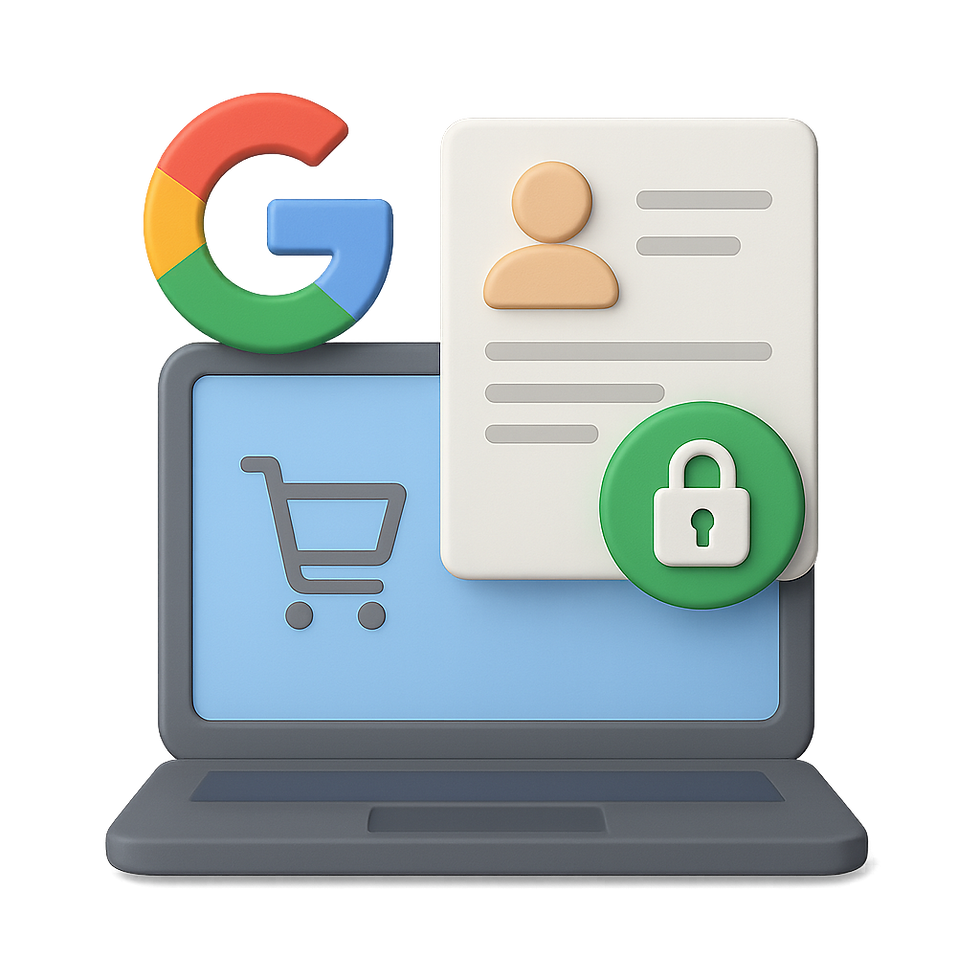Multi-Device Attribution: Tracking Google Shopping Conversions Across Mobile and Desktop Journeys
- Adnan Agic
- Jun 28
- 3 min read
In today’s e-commerce landscape, consumer behavior is more fragmented than ever. A user might first encounter your product on a mobile device during a commute, conduct further research on a desktop at work, and finally complete the purchase on a tablet at home. If your attribution model can’t follow this customer journey across devices, you’re likely missing crucial insights—and potentially undervaluing key touchpoints in your Google Shopping campaigns.
This blog explores how to track Google Shopping conversions across mobile and desktop journeys, and how to apply multi-device attribution insights to improve campaign performance.
Why Multi-Device Attribution Matters in Tracking Google Shopping Conversions
Multi-device behavior is no longer a niche trend—it’s the norm. According to Google, over 60% of online conversions involve multiple devices. If your attribution is limited to last-click or single-device models, you're likely:
Undervaluing upper-funnel efforts like mobile discovery.
Misallocating budget to channels or devices that close rather than assist conversions.
Missing opportunities to scale campaigns with high assist value.

How Google Handles Cross-Device Google Shopping Conversions
Google Ads leverages signed-in user data to stitch together cross-device journeys. This means when a user is logged into their Google account across devices, their interactions are connected in Google Ads, allowing you to see how mobile clicks contribute to desktop conversions (and vice versa).
In your attribution reports, especially with data-driven attribution (DDA), Google distributes credit across all contributing touchpoints—including those on different devices—based on actual conversion paths.
Enabling and Using Cross-Device Reporting
Here’s how to ensure you're capturing multi-device conversions:
Enable Enhanced Conversions or Use Google TagMake sure you’re using either Enhanced Conversions or the global site tag (gtag.js), which helps Google link user sessions more accurately across devices.
Switch to Data-Driven Attribution (DDA)Unlike last-click, DDA accounts for multiple device interactions and assigns credit accordingly. You can set this at the conversion action level in your Google Ads account.
Use Device and Segment ReportingNavigate to your Google Ads account → Campaigns → Segment by “Device.” This will show you which devices initiated and completed conversions, helping you spot gaps in the funnel.
Enable Cross-Device Conversions in ColumnsCustomize your reporting columns to include “Cross-Device Conversions.” This metric shows how many conversions involved multiple devices in the path to purchase.
Practical Example: Mobile Assist, Desktop Convert
Let’s say a user clicks on your Google Shopping ad on mobile while browsing during lunch. Later, at home, they search again on a desktop and convert. If you only looked at desktop clicks, you’d assume the desktop ad did all the work. With cross-device attribution, you'll see the mobile ad also played a critical role and deserves part of the conversion credit.
This helps you justify continued (or increased) investment in mobile campaigns that may not “convert” in the traditional sense but are essential assist touchpoints.
Strategies to Optimize Based on Cross-Device Insights
Adjust Bids by Device: Once you know which devices assist versus convert, adjust bids accordingly. Don’t kill mobile bids just because they don't close sales—reward them for their assist value.
Optimize Landing Pages Across Devices: Ensure product pages are seamless across mobile, desktop, and tablet to avoid drop-off at any stage.
Use Remarketing with Device-Agnostic Messaging: Use cross-device remarketing lists to follow up with users no matter where they go. Keep your messaging and creative consistent.
Key Takeaways
Multi-device attribution is no longer optional—it’s essential. Understanding how users move between mobile, desktop, and tablet before converting helps you:
Avoid undervaluing top-of-funnel activity.
Allocate budget more intelligently.
Optimize creative and bidding strategies across devices.
By leveraging Google’s tools and applying cross-device insights, you’ll create a more accurate picture of what’s really driving your Google Shopping performance.
Conclusion
In an age where the buyer’s journey is fluid and device-agnostic, marketers need to meet the moment with smarter attribution. By embracing multi-device tracking in Google Shopping, you position your e-commerce strategy for full-funnel clarity and long-term success.
Need help optimizing your Google Shopping campaigns for multi-device journeys? Contact us today.
About the AuthorAdnan is a digital marketing specialist with expertise in e-commerce optimization. With a bachelor's degree in Business Psychology focused on online customer behavior and analysis, he brings a unique perspective to understanding shopping behaviors and conversion patterns.



Comments